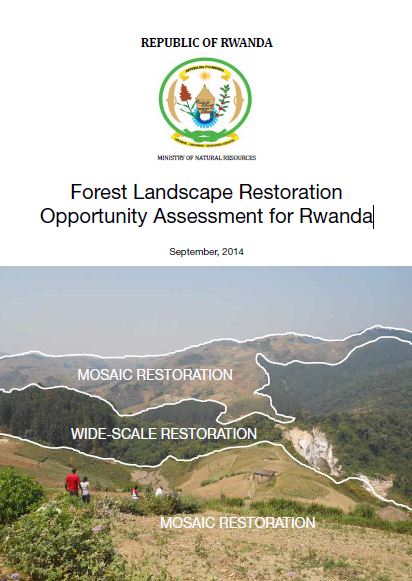Forest Landscape Restoration Opportunity Assessment for Rwanda
Forest landscape restoration (FLR) is the long-term process of regaining ecological functionality and enhancing human well-being across deforested or degraded forest landscapes. It is about “forests” because it involves increasing the number and/ or health of trees in an area. It is about “landscapes” because it involves entire watersheds, jurisdictions, or even countries in which many land uses interact. It is about “restoration” because it involves bringing back the biological productivity of an area in order to
achieve any number of benefits for people and the planet. It is long-term because it requires a multiyear vision of the ecological functions and benefits to human wellbeing that restoration will produce although tangible deliverables such as jobs, income and carbon sequestration begin to flow right away. It can indeed be achieved more quickly than many people think.

Photo: IUCN ESARO
Over the last centuries, vast forest areas worldwide have been cleared to meet the needs of a growing population. In fact, about 30% of global forest cover has been cleared and a further 20 % has
been degraded. This has led to significant reduction in biomass, biodiversity and ecosystem services from forests. FLR provides the opportunity for breaking the spiral of loss and degradation while
generating multiple benefits. For example, restored landscapes support livelihoods and biodiversity through provision of clean water, reducing soil erosion, providing wildlife habitat, biofuels and
other forest products. In addition, restoration of forest landscapes plays a critical role in mitigating climate change by sequestering carbon. Restoration of trees in agricultural landscapes can boost food productivity through enhanced soil fertility and moisture conservation. It is important to note that forest landscape restoration activities must complement and not displace existing land uses to result in a mos aic of different land uses, including for example agriculture, agroforestry systems and improved fallow systems, ecological corridors, discrete areas of forests and woodlands, and river or lakeside plantings to protect waterways.
